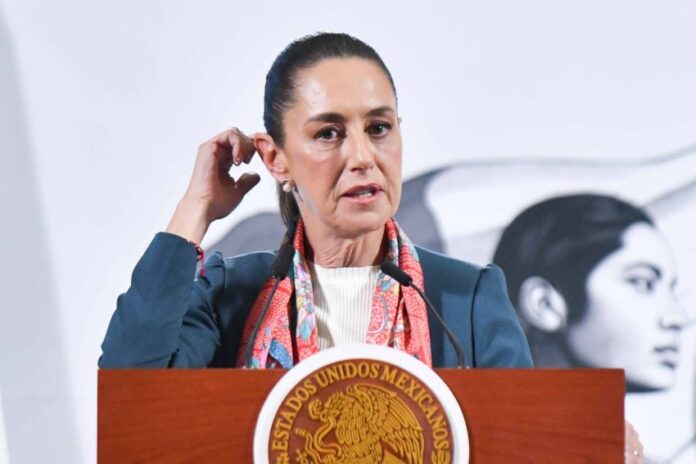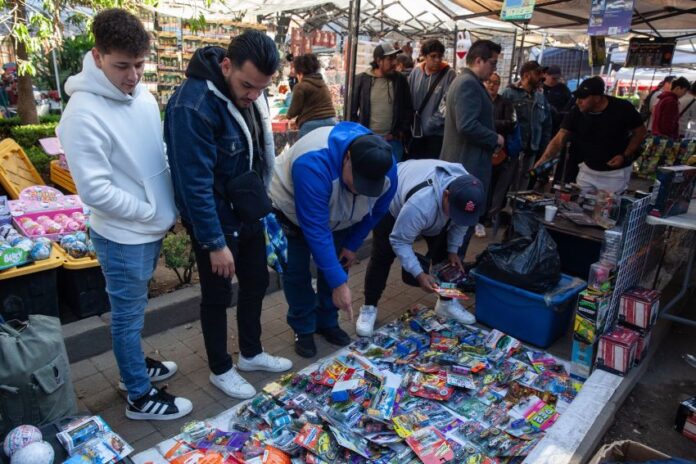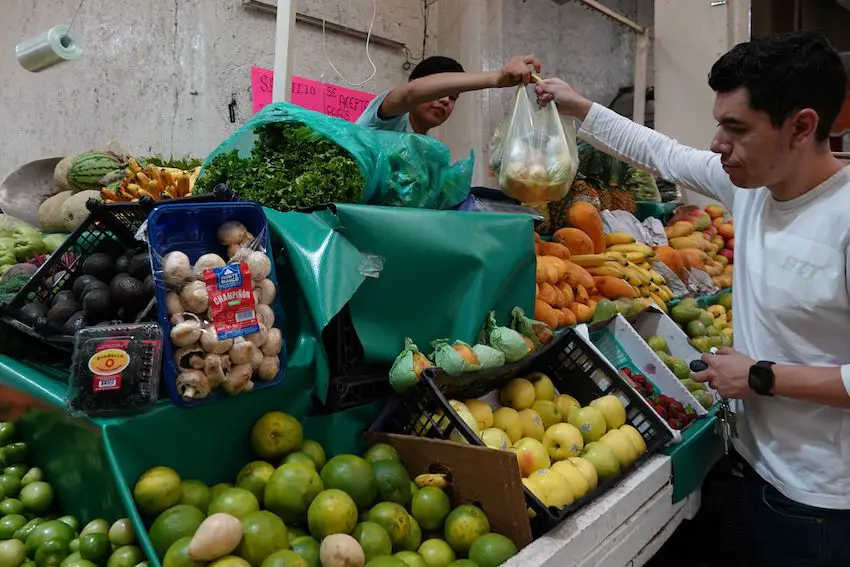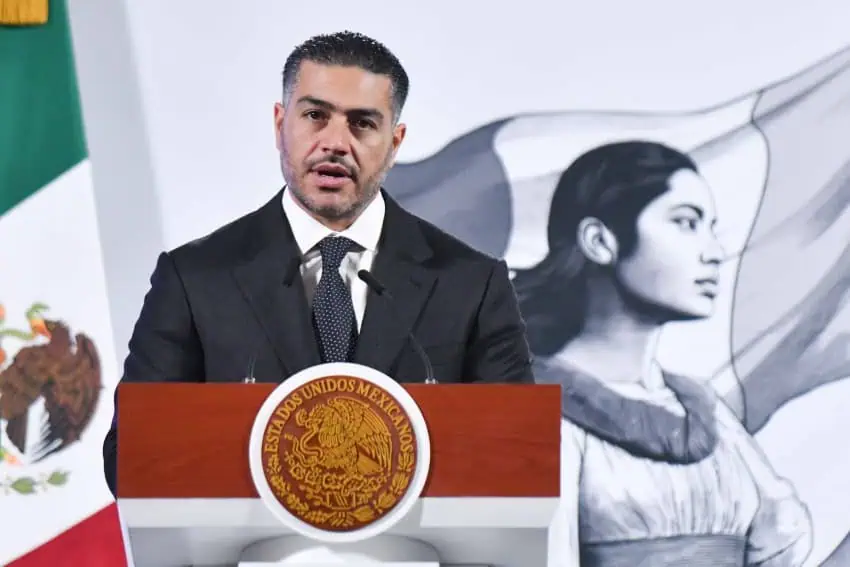Economy Minister Marcelo Ebrard took center stage early in President Claudia Sheinbaum’s Tuesday morning press conference to present Mexico’s argument as to why 25% tariffs on Mexican exports of steel and aluminum to the United States are not warranted and a “bad idea.”
United States President Donald Trump announced the tariffs on Monday, saying they would be imposed “without exceptions or exemptions.”

They are scheduled to take effect on March 12.
The argument presented by Ebrard focused on the fact that Mexico imports more steel and aluminum from the United States than it exports to its northern neighbor.
Sheinbaum said it was pointless for the United States to impose tariffs on Mexican steel and aluminum when it has a surplus with Mexico on the bilateral trade of those metals.
Among other issues, the president also spoke about homicide statistics and her administration’s security strategy. Her remarks came after high-ranking security officials presented the government’s fortnightly security update.
Sheinbaum: Mexico’s argument against US steel tariffs is ‘very strong’
Sheinbaum said that the imposition of tariffs on Mexican steel and aluminum would be a violation of the USMCA free trade pact and noted that there are “mechanisms — panels and other schemes” that Mexico can use to express its opposition to such duties.

She stressed that the tariffs are not due to take effect until March 12, giving Mexico time to present its case against them.
“And as Minister Marcelo Ebrard rightly points out, … the United States exports more steel and aluminum [to Mexico] than it imports [from Mexico]. So there is no deficit for the United States,” Sheinbaum said.
“… This is a very strong argument, which Minister Ebrard will set out in the different meetings he will have with the [U.S.] secretary of commerce,” she said.
“… It’s a very important argument to say that there is no point putting tariffs on the steel and aluminum the United States imports from Mexico,” Sheinbaum said.
Given that the United States had a US $6.9 billion surplus with Mexico on steel and aluminum trade in 2024, reciprocal Mexican tariffs on imports of those metals from the U.S. would have a larger economic impact than U.S. tariffs on imports from Mexico.
Sheinbaum didn’t say how Mexico would respond to the 25% tariffs if and when they take effect, emphasizing the need to wait and see what happens.
“As I always say, it’s step by step so we don’t get ahead of ourselves,” said the president, who last week negotiated a one-month pause on blanket 25% tariffs on Mexican exports to the United States.
Last month was the least violent January in 8 years
According to data presented by Marcela Figueroa Franco, head of the National Public Security System, last month was the least violent January in terms of homicides since 2018.
She noted that there was an average of 76.5 homicides per day last month, a reduction of 17.4% compared to January 2019, the first month of former president Andrés Manuel López Obrador’s first full year in office.

Figueroa also reported that there were 12% fewer homicides in January than in September, the final month of López Obrador’s presidency.
Sheinbaum attributed the decline in murders to the commitment of her government and the implementation of its security strategy.
“We work every day. Now there is a lot of coordination between the Defense Ministry, the Navy Ministry, the Security Ministry, the state governments … and the Federal Attorney General’s Office,” she said.
“And this has allowed us to make progress with the strategy that we put forward, which [consists of] attention to the causes [of crime], the … strengthening of the National Guard, [and increased] intelligence and investigation,” Sheinbaum said.
“… This has enabled a reduction [in violence], it’s important to point it out. There is a 12% reduction in homicides in four months, and January of 2025 was the January with the lowest number of homicides in at least eight years,” she said.
“… And as I have said, we’re going to keep working every day to build peace and security in our country,” Sheinbaum said.
More than 11,000 people arrested for ‘high-impact crimes’ since Sheinbaum took office
Security Minister Omar García Harfuch provided an update on arrests, drug busts and seizures of weapons. He told reporters that since Sheinbaum took office on Oct. 1, authorities have:
- Arrested 11,600 people for “high-impact crimes” such as murder, kidnapping, armed robbery and extortion.
- Seized 102 tonnes of drugs, including large quantities of fentanyl.
- Confiscated 5,629 firearms.
- Dismantled 192 “clandestine laboratories” where methamphetamine was being made.
By Mexico News Daily chief staff writer Peter Davies ([email protected])

























